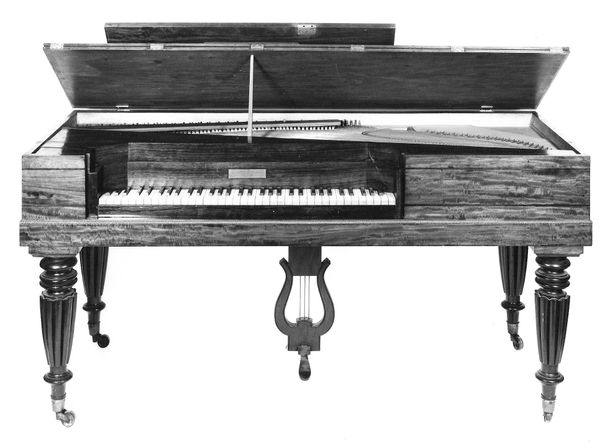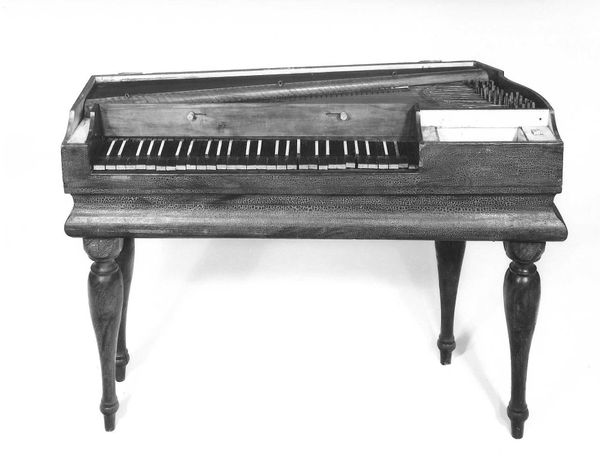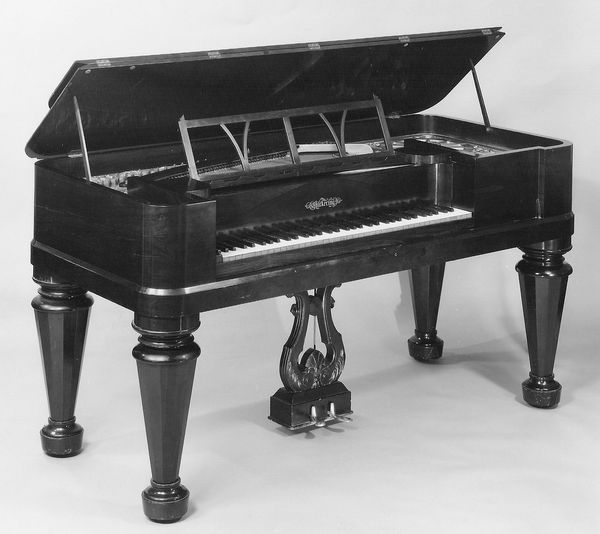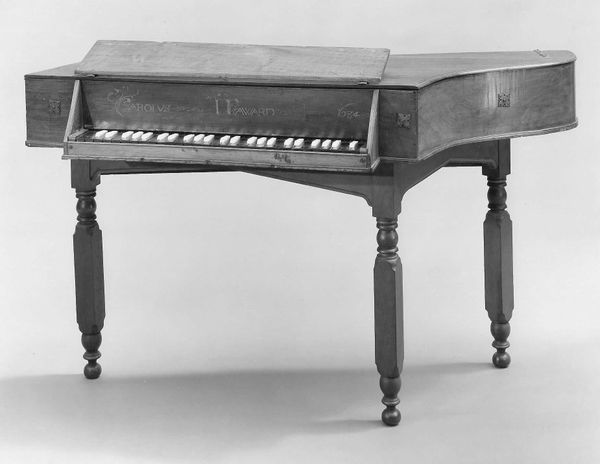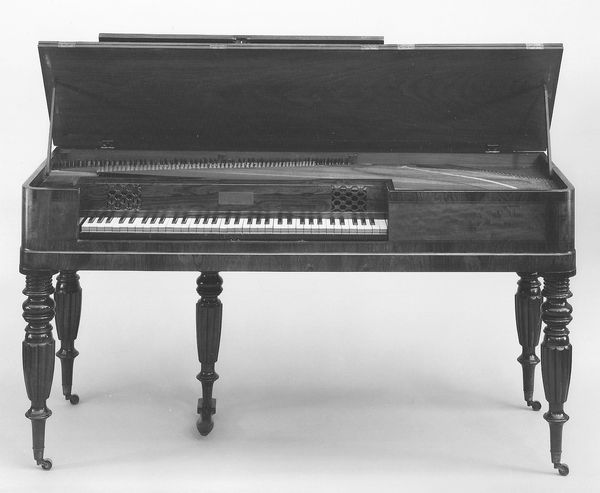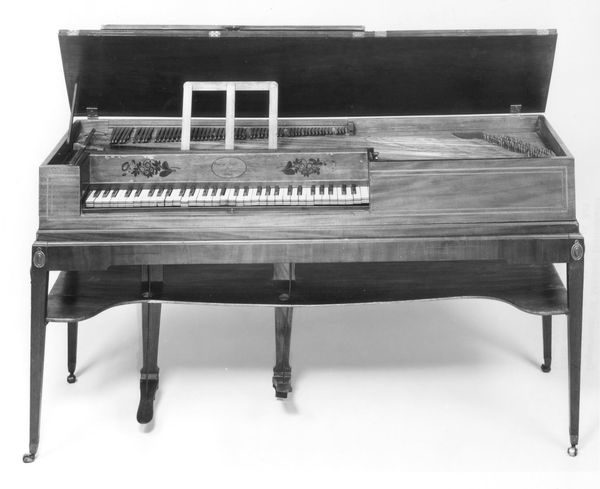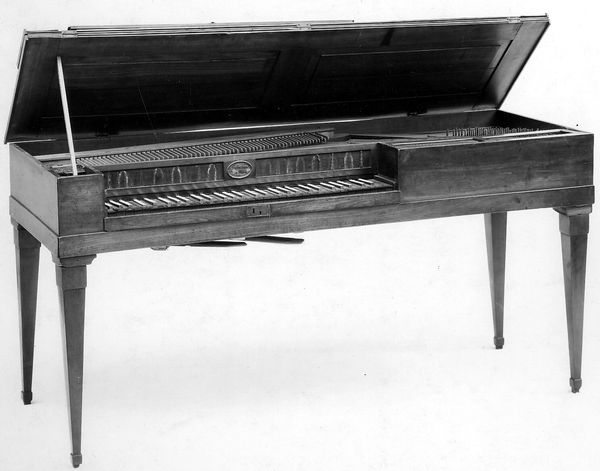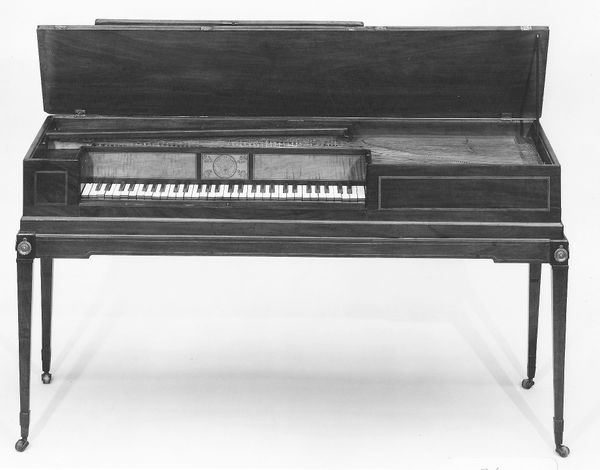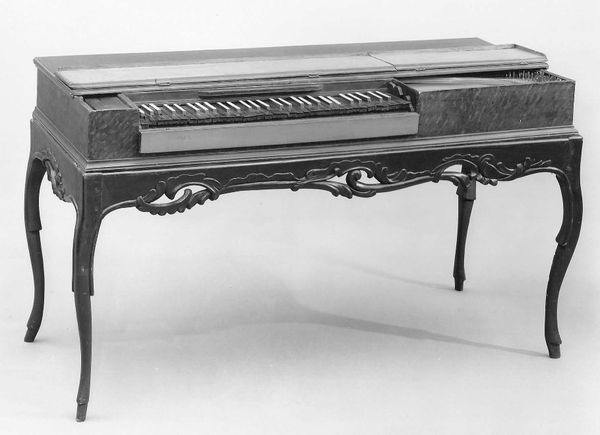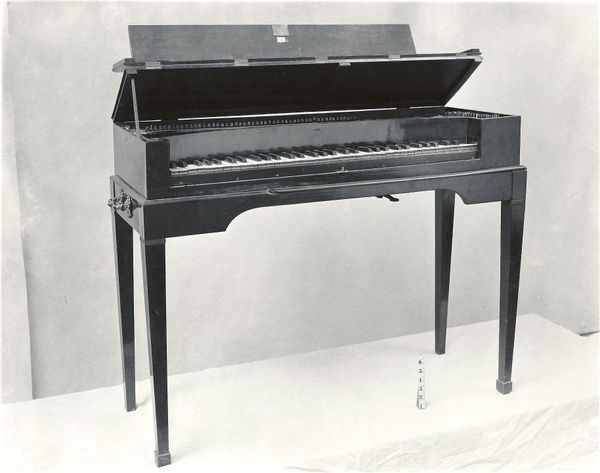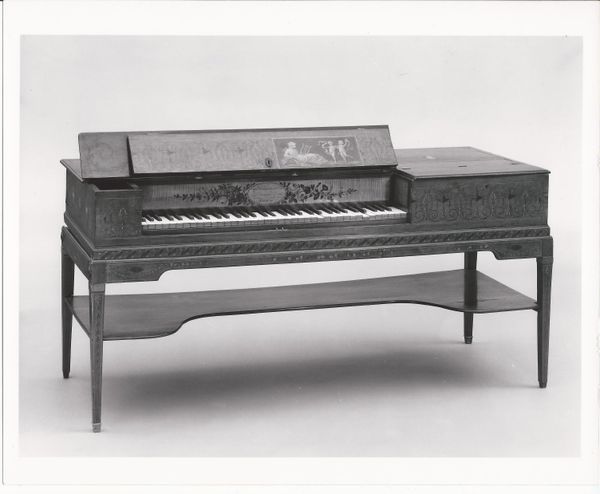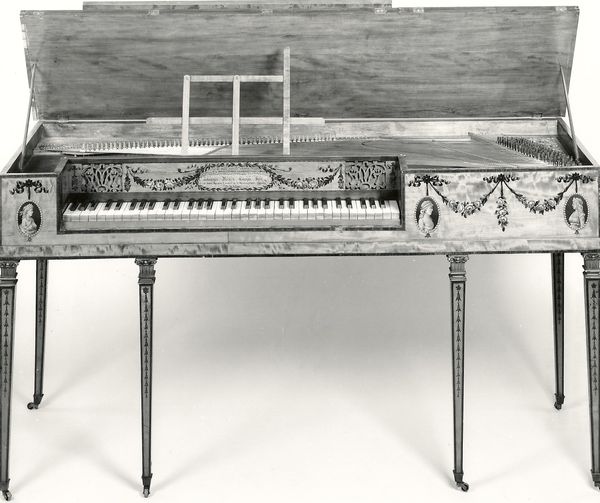
wood
#
neoclacissism
#
sculpture
#
united-states
#
wood
#
musical-instrument
#
decorative-art
Dimensions: Case L. (perpendicular to keyboard): 66 cm (26 in.); W.: (parallel to keyboard): 169.3 (66-3/4 in.); Case depth (without lid): 27 cm (10-5/8 in.); Total H.: 87 cm ( 34-1/4 in.); 3-octave W.:48.5 cm (19-1/8 in.)
Copyright: Public Domain
This Square Piano was crafted by Alpheus Babcock, a prominent figure in the early American piano industry. It’s a reminder that the history of musical instruments is also a history of design, craft, and industrialization. The piano’s case is made from wood, likely mahogany or rosewood veneer over a softwood core. The keys are ivory and ebony. These materials reflect the complex supply chains of the 19th century. The instrument was not only an object of domestic display but also linked to a globalized economy. Crafting such an instrument involved numerous specialized skills, from woodworking and metalworking to keyboard making. These skills represent a shift from individual craftsmanship to factory production. The piano embodies the tension between artistry and industrialization. By considering the materials and processes behind this piano, we can better understand its cultural and historical significance. It challenges us to appreciate the skilled labor and global connections embedded in its creation, bridging the gap between art, craft, and industrial production.
Comments
No comments
Be the first to comment and join the conversation on the ultimate creative platform.
